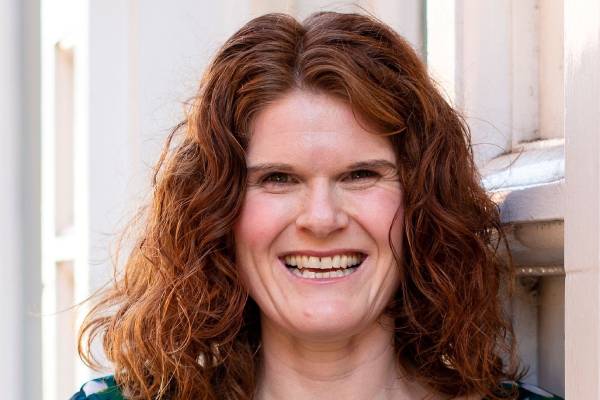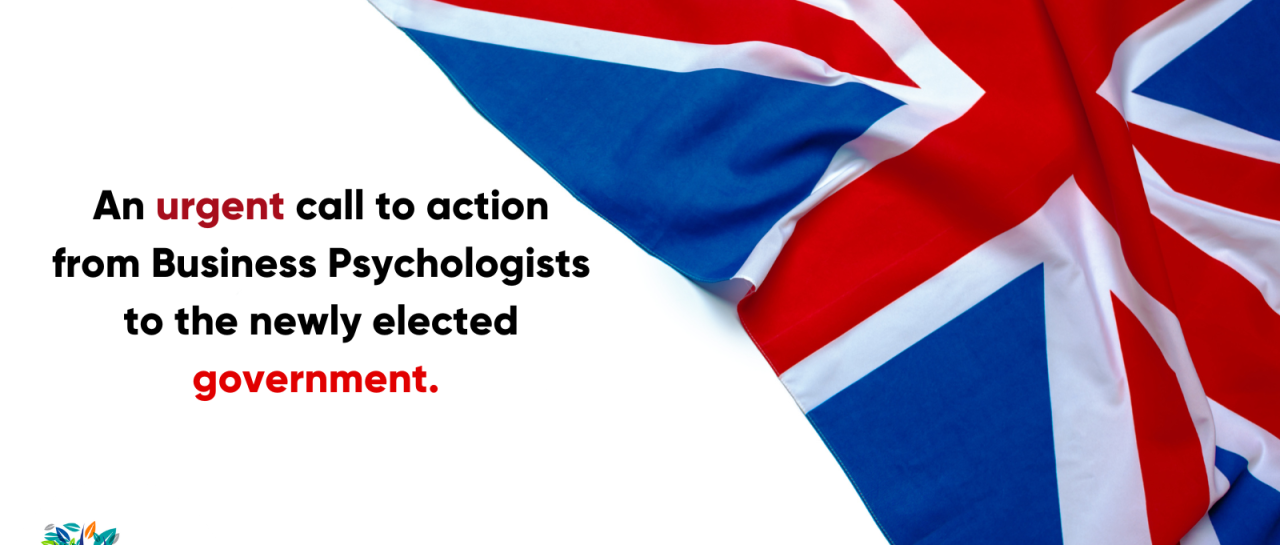Authored by Certified Business Psychologist Laura Howard. Certified Business Psychologist, Laura Howard, reflects on the webinar she recently delivered to ABP members. Below she outlines the main findings of her published research uncovering systematic barriers women face when being authentic as leaders. Importantly, she gives…
The ABP celebrated the first Face to Face event since the start of the Pandemic at the University of Westminster and were delighted to welcome Ali Shalfrooshan, Head of International Assessment R&D at PSI Talent Management.
Effective implementation of a Diversity and Inclusion policy is critical to building inclusive relationships at work and building better organisations which are able to deliver better innovation, financial results and better hiring. Interestingly as many of 67% of job seekers are aware of this importance and indicated that they would prefer an employer which encouraged a diverse workforce.
Success in this area however comes down to a range of improvements regarding processes, policies, and initiatives. It also requires the deployment of better and more objective assessment, selection and talent management processes.
But immediately we come up against some valid paradoxes and barriers. We briefly discussed objective assessment and the typically positive impact on the organisation, but despite the best of intentions do we still have a preconceived idea about the type of person we want for the role? And can the reality of selection have the opposite effect to attempts at inclusivity in assessment? Trying to identify talents using historic models or what worked in the past can have a negative effect on identifying the talents for the future and the overall desire for greater diversity.
This session addressed these challenges and other matters:
• An appreciation of Diversity and Inclusion and what it means
• How do we create an inclusive climate?
• What are the Inclusive behaviours?
The importance of diversity and inclusion
Author and VP of Inclusion Strategy at Netflix Verna Myers has produced one of the best definitions of D&I that encapsulates the two distinct sides of the coin: Diversity is being invited to the party: inclusion is being asked to dance.
Diversity is not just about one characteristic, it is about a range of attributes which makes us different and includes the following non-exhaustive list: Personality Types, Education, Neurodiversity, disability, use of language, race, work experience, thinking style, age, religion, gender, socio-economic status and even the kind of work preferred such as full or part time. In essence, it is fair to say that we have so far barely scratched the surface in terms of what can be achieved in organisations through a fair and comprehensive D&I policy. Despite there being interest in trying to address the issue, organisations still have a lot to do to fully realise and address the issues related to D&I. Some of the potential challenges of trying to improve processes were discussed:
• Access to data: Barriers such as restrictions on information acquired and recorded due to GDPR. The availability of more granular demographic information enables improvement of tests and processes, so despite improvements to data protection being warranted, it may result in less proactive improvements.
• Language: Use of certain language in job descriptions and assessment materials can potentially be a barrier to fairness. The use of language needs to be clear and has to be globally applicable so as to avoid possible exclusion. However, how easy is it to ensure every HR person is aware of the impact.
• Intersectionality: Diversity is not limited to one area (personality, age, disability, ethnicity, socioeconomic status), there are so many ways that people can be different. Within that, individuals can intersect across many of these categories, which can lead to them being treated very differently. The complexity of the issue can make it very daunting for some people in HR, especially if they want to have a positive impact.
Another consideration is the shifting view of diversity. The Deloitte Survey (2019) identified cognitive diversity and how this is viewed by different age groups. The traditional view held by Baby Boomers sees D&I in the context of racial, ethnic and gender demographics, whereas younger workers see it as a mix of experiences, identities and opinions, along with the view that it’s also about how different points of view are accepted and valued.
Therefore, despite D&I being something that has a positive financial impact on organisations, and it is our moral imperative to address, it is also a very complicated one to get right. However, nothing gets addressed without action, so despite its complexity, it is something we can all improve. Even if it is incremental enhancements, doing something is better than nothing.
The challenge of bias
The impact of the need for workable D&I policies and the issues of bias can be most clearly found in examples of CV evaluation. Almost identical CVs provided in response to job applications for a position at an anonymous company produced interviews for those with Asian names in 4% of cases and those with English names in 12% (Adesina and Marrocico, 2017).
Overall, despite the best of intentions and many people being decent and kind, we all have biases and some can be harmful. Some simple techniques, such as blind reviews can have a significant impact on outcomes e.g. “Behavioural Ecology” had a significant increase in successful submissions made by women and there was a 50% increase in the number of women being successful in applying for orchestral positions using such techniques.
Bias training despite showing some initial promise has been shown to be largely ineffective in terms of its impact. However, despite these findings the issue of bias still exists, so how can it be addressed? Can bias be addressed by training in self-awareness, perhaps using personality profiling tools or other tools?Ultimately at the base of this, is the need for the brain to tame the “instinctive” side (typically associated with the amygdala) and activate the more logical side (our executive functioning).
There are many biases that an individual can hold that can impact the accuracy of our judgements. To simplify a very complex issue there are three areas where inaccuracy of judgement can be categorised
• Cognitive bias, which could lead to stereotyping (how we think)
• Affective bias, which could result in prejudice (how we feel)
• Behavioural bias, which can manifest itself as discrimination (what we do)
Cognitive: Heuristics are strategies to reduce the burden on the brain and to process information effectively but not always accurately. These strategies are quite broad and cover a range of complex cognitive processes. According to the University of Southern California, the brain can process as many as 70,000 thoughts per day.
Affective: There is a tendency towards bias through a strong sense of self and identity. We don’t always have the same sense of instinctive feelings towards others as we do towards ourselves. This is part of the phenomenon of “higher perceptions of self” enshrined in “Implicit Egotism Theory” and “Social Identity Theory”.
Behaviour: With the cognitive and affective components of bias, in some ways these are harder to address directly, they are typically more unconscious and so difficult to directly influence. Therefore, It is hard to change these automatic processes, but it is possible to change our behaviour, especially if we become aware of these processes that impact the accuracy of our judgement and perceptions.
The best that we can do is recognise that we are more likely to feel comfortable with similar people, that unconscious bias exists in all of us as part of human nature, focus on behaviours and then keep working on it through conscious effort. A practical approach is to understand what behaviours you can deploy that are more inclusive. These will be even more likely to change if you are motivated to adopt, use and develop these behaviours.
Focusing on our own behaviour
Victor Frankl identified that “Between Stimulus and Response there is a Space. In that space lies our freedom and our power to choose our response. In our response lies our growth and our happiness”.
This quote highlights that between all of the cognitive processes and instinct that lead to our behaviour, there is a moment between thought and action where we can redress some of the potential biases we all hold. By focusing on what we do and taking a moment to question our decisions and choices, we will be better able to implement behavioural change that can help us be more inclusive.
PSI had the opportunity to work with a client in detail to explore this gap and see whether it could be used effectively to address the problem of institutional racism. In addition since then they have been able to work with a range of organisations globally in order to support and develop inclusive climates and more effective work relationships.
This allowed for a full analysis of individual elements and produced some useful results. The following steps were used:
• Literature review and interviews
• Behavioural Framework Design
• Item writing, trialling and evaluation
• Online Implementation and usage
• Updating based on client feedback, retrialling and developing a newer version
The result was a tool now known as Perspectives. This measures behaviours that underpin cultural capability, looking at an individual’s capacity to behave fairly, inclusively and respectfully with all people regardless of how similar or different they are to them.
After all, people have strong feelings about being labelled unconsciously biased and will push back when confronted. By focusing on our own behaviour that can be developed, rather than more immutable and universal issues such as unconscious bias. The tool helps build self-awareness and shed light on traits/behaviours which might help improve cultural capability and their ability to work effectively with others.
It was found that by highlighting the universality of needing to belong and the existence of bias, people were more receptive, comfortable and secure about discussing it. By focusing on the natural need for all of us to feel accepted for who we are, whatever demographic you may come from, led to a more inclusive concept of being inclusive. This does not mean that there isn’t a disparity in how people are treated, but it does mean that we focus on the problem together rather than as different factions.
In addition to taking this somewhat useful prescriptive approach, it needs to lead to elements of acceptance and winning “Hearts and Minds” of those who aren’t typically referenced when trying to address inclusion.
So, how can we use these ideas to create an inclusive climate?
• Appreciate issues and can facilitate
• Build knowledge to acquire skills
• Champions – meeting the challenge
The starting point is identifying what we need to do with individuals and then use these elements to build better working relationships. The following behaviours were identified as being important in building effective work relationships
• Empathy, the strongest predictor of performance. This demonstrates sensitivity towards others, the ability to listen and just be curious. Traits can link through to behaviours
• Relationship Building, proactively build practical relationships with others, perhaps even without significant verbal communication
• Learning Orientation. More likely to learn and more open to learning opportunities
• Open-Mindedness. Need to be more open to questions and being questioned about work performance
• Composure. We need to be more comfortable and understanding of ourselves. We need to be capable of “stopping” ourselves under stress
• Flexibility. This is all about changing habits and willingness to accommodate others.
In summary, inclusion is a key issue for all organisations to address. Fundamentally, processes and procedures when properly applied can provide the focus for the goal of making organisations more diverse and inclusive, but it as much about self-awareness and winning “Hearts and Minds” and good leadership. If we can all change and enhance our own behaviour the better placed we will be to address challenge and change.
In conclusion, the Perspectives project has already yielded substantial benefits. It is already being used for a range of leadership programmes in an international organisation. It is the basis of high-level coaching sessions and a strengths-based approach to a senior HR and D&I teams and has already proved that behaviours can be used to overcome some of the unconscious biases. Despite the issues of D&I are very significant, by focusing on our own behaviour we can help overcome some of the challenges that we see in society.



